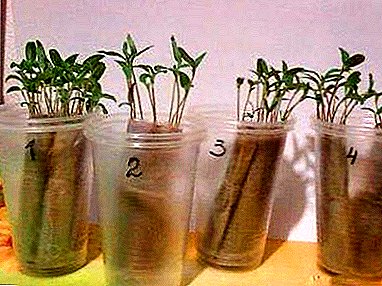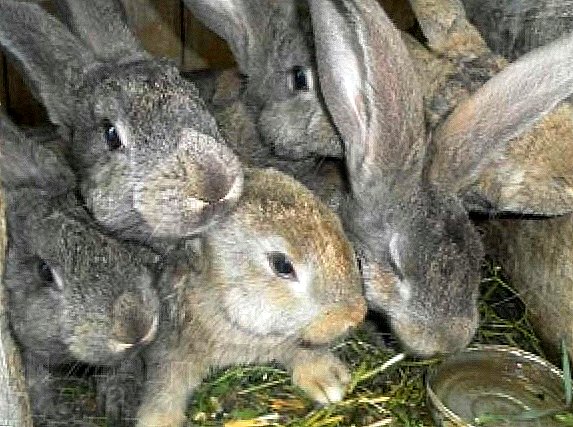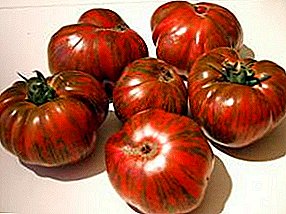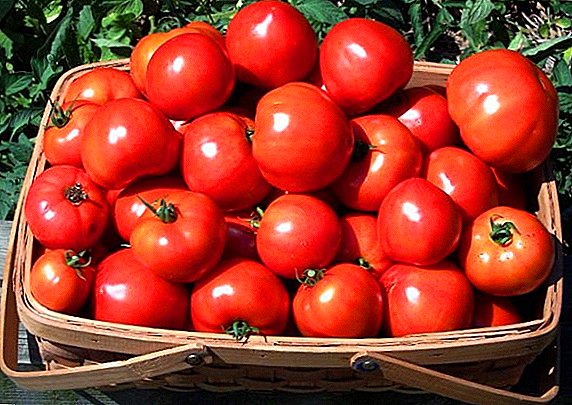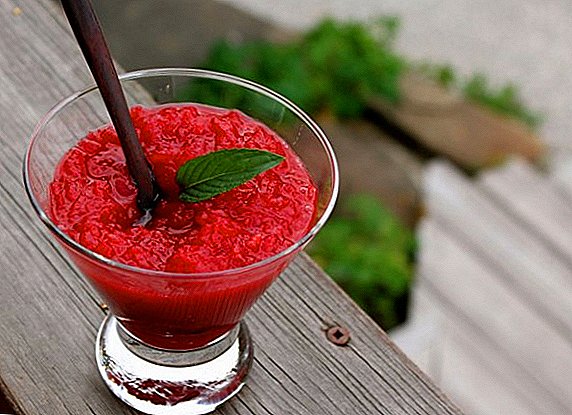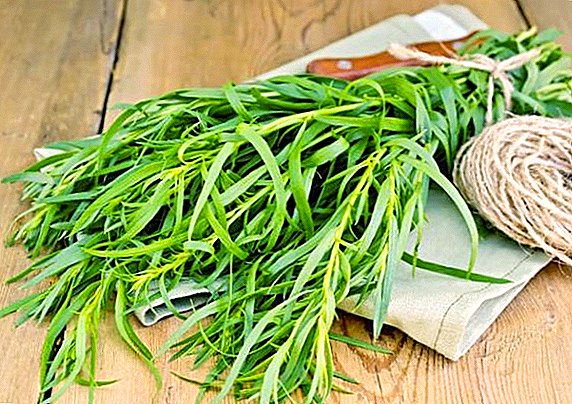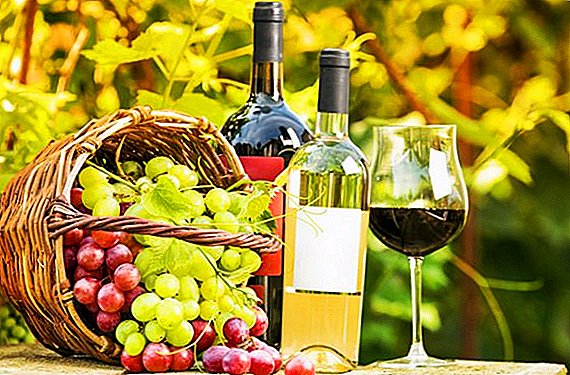 Today, there are many types of wines from different varieties of berries. But the most popular is still grape wine. We will talk about what kind of grapes to choose and how to make a tasty drink out of it in this article.
Today, there are many types of wines from different varieties of berries. But the most popular is still grape wine. We will talk about what kind of grapes to choose and how to make a tasty drink out of it in this article.
What grape variety to choose
To make wine from grapes at home, you can absolutely choose any variety this plant. Moreover, the sunny drink can be made from a combination of different grape varieties. Even if you mix white and blue varieties, the wine will not diminish the taste in this, and in some cases will add.  The most common grape drink is made from the following grape varieties: Druzhba, Kristall, Stepnyak, Platovskiy, Festivalny, Saperavi, Rosinka. All of these varieties contain a large amount of sugar in their berries, so the drink is especially tasty.
The most common grape drink is made from the following grape varieties: Druzhba, Kristall, Stepnyak, Platovskiy, Festivalny, Saperavi, Rosinka. All of these varieties contain a large amount of sugar in their berries, so the drink is especially tasty.
Did you know? In 2000, at the wine auction, a solar drink with a capacity of 6 liters was sold for half a million dollars. It was the 1992 Cabernet Sauvignon wine, and American top manager Chace Bailey bought it.
Fans of homemade wine can unanimously say that the most delicious drink will come from Isabella or Lydia grapes. In this product you need to add a little more sugar, but its taste is excellent.
The most common "wine" grapes are considered: "Pinot Blanc" or "Pinot Noir", "Chardonnay", "Aligote", "Sauvignon", "Merlot", "Cabernet".
Drinks from the fruits of pink grape varieties have a special taste. They are famous for their rich consistency and unique taste. But a delicious wine can be made even from the most ordinary wild blue grapes.
The high content of juice, which is an important condition for making wine, is possessed by the varieties "Jupiter", "Kesha", "Monarch", "Amursky".

Grape preparation
Raw materials for the preparation of a solar drink should collect in September, and in the southern regions - in October. Harvesting is best carried out in clear and sunny weather, it is desirable that 2-3 days before the berries are not cold and rainy days. After harvesting it, you need to sort it out: fold back all the unripe, dry and green berries, remove extra branches and leaves.
After picking the berries, they should be laid out for a few hours in the sun. So bunches of grapes will get a brighter flavor. Winemakers no wonder they say that wine is a living product that feels any manipulation of it. But one should not keep collected clusters for more than two days.
It is forbidden to wash harvested grapes, so it will lose its pure yeast culture. On each berry there are natural microorganisms that help with fermentation, if the clusters are washed, the quality of the future wine will immediately deteriorate. 
Processing grapes
Grapes should be placed in a wooden, plastic or enameled container. Any of the selected containers need to be filled with product on 3/4 partsotherwise the juice and the pulp can run away. You can crush the berries with your hands, feet, or special wooden devices, such as a wooden pestle.
Important! When processing berries it is not recommended to use pure metal containers. In reaction with grape juice, they can oxidize and give an unpleasant metallic taste to the sunny drink.
By the way, experienced winemakers say that the most delicious wine is obtained only when grape juice is obtained by gravity (the juice is formed spontaneously in a large container under the weight of its own grapes). But to get juice and pulp in this way, you need a large amount of overripe grapes.
The resulting pulp and juice should be covered with a cloth and put in a dark warm place for 3-4 days. After some time, the pulp will float to the surface, the juice will be easier to separate. And do not forget to mix the container with the mixture at least twice a day, otherwise the juice may turn sour.
Getting pure juice
The recipe for homemade grape wine is primarily proper separation of juice from pulp. First you need to collect all the pulp from the surface of the juice and put it in a separate container (then, if you wish, you can make chacha from it).
The remaining liquid must be properly filtered several times. To do this, use the usual gauze, you need to filter at least 2-3 times. With such frauds, the juice receives additional and necessary oxygen.
Now you can try the juice and check it for acidity. If it is very acidic, it can be diluted with water, but not more than 0.5 liters of water per 1 liter of juice.
It is necessary to do this only in extreme cases, and it is better not to do it at all, since in the future you still have to add sugar to the liquid, which will contribute to a decrease in acidity. 
Filling the fermentation tank with juice
At this stage, the juice should be poured into special containers and put in a dark warm place. It is desirable that the containers were glass and with a long neck. It is necessary to fill the containers by 2/3, maximum - 3/4 parts. By the way, one of the options for juice containers can be a plastic food canister. In such containers, the juice will begin its fermentation stage.
We recommend that you familiarize yourself with the technology of making wine "Isabella" at home.
Water shutter installation
The hydraulic lock is used to minimize the contact of the young solar drink with oxygen, as well as to remove carbon dioxide from the tank, which occurs during the fermentation process. For this, a special bottle is put on the can (canister or bottle). hose fitting.
Did you know? During the Roman Empire, before the beginning of our era, women were forbidden to drink wine. If a woman violated this law, her husband had the right to kill her.
You can make a hydraulic lock for a container with young wine yourself, but for reliability it is better to buy it in a store. The most common water seal is a tube that is connected on one side with the fermentation tank lid, and on the other with a can filled with water.  Some winemakers use the most common medical rubber glove as a water seal. To do this, put it on the fermentation tank and in one of the fingers of the glove make a small hole (you can use a needle).
Some winemakers use the most common medical rubber glove as a water seal. To do this, put it on the fermentation tank and in one of the fingers of the glove make a small hole (you can use a needle).
Active fermentation
Storage temperature of young red wine with active fermentation should be within 21-28ºС. For white varieties of the solar drink, the temperature regime should vary in the range from 17 ° С to 22ºС. Just remember that at a temperature lower than 16 ° C the fermentation of the young drink may stop.
By the way, sharp temperature jumps are also strictly contraindicated. It is best to store containers with a drink in a dark place, if possible, cover them with a thick cloth.
Homemade wine is made from many "gifts" of the garden: black currant, raspberry, apple, black chokeberry, yoshta.
Adding sugar
With each increase in the concentration of sugar in young wine by 2% of its strength increases by one degree. In the standard version, without adding sugar, the sunny drink will have a strength of about 9-10 degrees. However, the maximum possible fortress is 14 degrees. It is worth noting that the strength of the wine can exceed 14 degrees, but then all the natural yeast fungi begin to die, the fermentation process stops.
After 2-3 days of active fermentation, sugar can be added to the containers with a drink. To do this, you need to drain a liter of juice from the container and add 50 mg of sugar to it. Then mix everything and try: if the juice remains the same sour, you can add another 20-30 grams of sugar. Then drain all liquid back into the container. Such procedures should be repeated every 5-7 days. And when you notice that the sugar content of the solar drink is no longer falling, you can stop adding sugar. This will mean that sugar has already ceased to be processed into alcohol.
Surprisingly, the wine can be prepared even from jam and compote.
Removal of wine from sediment
Often the full fermentation cycle can continue. from 50 to 60 days. It depends on the temperature conditions and the grape variety from which the sunny drink is made. But if after 60 days the fermentation process continues, it is better to separate the contents of the tank from the sediment.
To do this, use a small clean hose, and all the liquid is drained into a clean dish. Next, put on a new water seal and leave the wine in a dark place for some time, so that it can be good.
Important! If after the end of fermentation to keep the wine on the lees for more than two weeks, then it can lose its aromatic smell and taste.
Wine is drained only in case that, if the medical glove was blown away (when used as a water seal), and the liquid brightened and precipitate fell. Or if the water in the bank ceased to gurgle (in case of using a purchased hydraulic seal).  Remove the wine from the sediment should be promptly, because over time it can become bitter. This happens due to the fact that fermentation yeast precipitates and, in addition to the bitter taste, can give off an unpleasant smell.
Remove the wine from the sediment should be promptly, because over time it can become bitter. This happens due to the fact that fermentation yeast precipitates and, in addition to the bitter taste, can give off an unpleasant smell.
In order to properly separate the liquid from the sediment, initially the container with the solar drink should be put on a high place. Then you should wait until the solids again precipitate (during the transfer of liquid, the precipitate moves throughout the drink).
Next, you need to take a thin clean hose and a new fermentation vessel, which is placed below the level of the wine tank. Drain carefully and gradually, holding the hose 1-2 cm above the sediment. Otherwise, it can go along with the liquid to a new tank.
Sugar control
At this point, the fermentation of the solar drink completely stops. Therefore, if you add sugar, it will not be processed into alcohol. Recommended maximum: 250 g sugar per 1 liter of drink. Control sweets to your taste. Pour a liter of drink into a separate container and gradually add sugar to it. When you find your ideal, you can add sugar to all bottles or cans.
Many wonder how to determine the strength of the wine at home. There are several answers to this question. The easiest way to determine a fortress is to purchase a wine man. Having carefully studied the instructions for use, you can measure the strength of your wine. If you do not have a wine meter, then there is another way.  This method directly depends on the amount of sugar in your product. The sugar content of the wort is measured in brie. If, for example, your product has 22-23 Bree, then its strength is 13.3-13.7 degrees. The amount of brie (sugar level) is measured using a refractometer. If you do not have a refractometer, then you can use special sugar content tables, in which the Brie level is noted in different grape varieties.
This method directly depends on the amount of sugar in your product. The sugar content of the wort is measured in brie. If, for example, your product has 22-23 Bree, then its strength is 13.3-13.7 degrees. The amount of brie (sugar level) is measured using a refractometer. If you do not have a refractometer, then you can use special sugar content tables, in which the Brie level is noted in different grape varieties.
Did you know? The Palatinate Museum houses the world's oldest bottle of wine. It dates back to 325 AD.
Wine ripening
After all the above processes, the wine can be left on maturation. Sunny drinks from white grapes should be kept for one and a half months, and from red ones - two. More than a year to withstand none of the varieties of wine not necessary, it will not make any sense (such actions will not affect the organoleptic properties of the drink).
Young drink is best poured into glass containers of not very large sizes. It is necessary to fill it with wine to the very edges so that there is no room for air in the container. It is best to seal the containers with cork plugs. You need to store the solar drink in a cool dark place at a temperature of 5-20ºС.
Cleaning wine from impurities
Lightening wine at home can be done different methods. We will tell you more about the main methods of cleaning a solar drink:
- Cleaning with gelatin. To lighten the wine in this way you need to take 10-15 g of gelatin per 100 liters of drink. For 24 hours, gelatin must be soaked in cool water, replacing it during this time three times. Gelatin should be diluted in warm water and add the mixture to the container with a drink. After 2-3 weeks, all excess substances will "stick" to the gelatin and precipitate. You just need to collect it, and the wine will become much lighter.
- Heat treatment. All glass bottles of wine should be placed in an iron bowl or pan, fill the container with water to the very top of the bottles and put on the fire for heating. In this case, the bottles must be tightly sealed so that the alcohol from the solar drink does not evaporate. Heat the water in the tank to 50-60 °. The procedure is repeated 2-3 times. A few days later the wine will precipitate. It can be removed in the manner we described above.
- Activated carbon. Lightening in this way is used in extreme cases. For example, when a wine has an unpleasant smell. It is necessary to use not pharmaceutical coal, and wood. It is crushed to powder, added to the drink at the rate of 4-5 g of coal per 10 liters of liquid. For 3-4 days, the drink should be shaken regularly, and on the fifth day it should be cleaned with a special filter (for example, filter paper).
- Cold to lighten the solar drink. Wine can be kept for some time in a cold place at temperatures of -5 ºС. Under such conditions, natural yeast and wort particles precipitate. Then the wine is quickly filtered and returned to a warm place.
- Milk clarification. This method is universal and often used. At 1 liter of drink you need to add a teaspoon of skim milk. Leave the wine at a temperature of 18-22ºС. After 3-4 days the drink will be much lighter.
There are many more ways to purify wine from particles of wort and natural yeast. But we have described the methods most popular among the people above. By the way, many winemakers consider the method of heat treatment of a drink the most effective method.
Spill and storage
Bottles for long-term storage of wine before bottling should be thoroughly washed and disinfected. You need to pour the drink almost to the cork itself (you can leave 1-2 cm of free space). Corks for closures must be new and clean, otherwise the drink may acquire an unpleasant smell and taste. If you are not going to keep the drink for a long time, then you can cork it with regular beer jams.
Important! If you are going to store wine for a long time, then you can bury it in the ground. At the same time, sprinkle the pit with straw, and sprinkle the bottles on top with sand.
It is necessary to seal the bottles with a special cupor, so the container with the drink will be more tight. Before corking, stoppers must be steamed in hot water. After swelling cork with the help of the cupor can be driven into bottles. Then you should thoroughly wipe the neck of the bottle and fill it with wax or wax. So drink will retain its flavor and strength.  In order to know the date of the spill and the type of wine, it is advisable to stick labels on each of the bottles. Store containers with a sunny drink in a horizontal position. So drink will wash jams, they will be constantly in the swollen state.
In order to know the date of the spill and the type of wine, it is advisable to stick labels on each of the bottles. Store containers with a sunny drink in a horizontal position. So drink will wash jams, they will be constantly in the swollen state.
If you store the bottle in an upright position, the caps may dry up, the containers will lose their old tightness. Wine should be stored at temperatures of 5-8 ºС. Fortified wines are stored at a temperature of 8-10ºС. But if at these temperatures to store light table varieties of solar beverages, they can ferment, therefore, these varieties are stored at temperatures of 4-6ºС.


